LEGAL RIGHTS
LEGAL RIGHTS
The Guide for Deaf and Hard of Hearing People
Sixth Edition
NATIONAL ASSOCIATION OF THE DEAF
Gallaudet University Press
Washington, DC
Gallaudet University Press
Washington, DC 20002
http://gupress.gallaudet.edu
1982, 1984, 1986, 1992, 2000, 2015 by Gallaudet University
All rights reserved. First edition 1982.
Sixth edition 2015
Printed in the United States of America
Library of Congress Cataloging-in-Publication Data
Legal rights : the guide for deaf and hard of hearing people / National Association of the Deaf.Sixth Edition.
pagescm
Includes index.
ISBN 978-1-56368-644-3 (pbk. : alk. paper)ISBN 978-1-56368-645-0 (e-book)
1. DeafLegal status, laws, etc.United States.2. Hearing impairedLegal status, laws, etc.United States.I. National Association of the Deaf.
KF480.5.D4L43 2015
 This paper meets the requirements of ANSI/NISO Z39.48-1992
This paper meets the requirements of ANSI/NISO Z39.48-1992
(Permanence of Paper).
Authors
National Association of the Deaf Law and Advocacy Center
Howard A. Rosenblum, NAD Chief Executive Officer and Director of the Law and Advocacy Center
JD, Illinois Institute of Technology/ChicagoKent
Marc Charmatz, Senior Attorney
JD, Northwestern University
Debra Patkin, Staff Attorney
JD, University of California Los Angeles
Andrew Phillips, Policy Counsel
JD, University of California Hastings
Caroline Jackson, Staff Attorney and Skadden Fellow
JD, Stanford University
To the Executive Directors of the National Association of the Deaf for their longstanding support of the goals of the NAD Law Center and in memory of Fred Schreiber, the happy warrior for Deaf peoples rights
Contents
Preface
E stablished in 1880, the National Association of the Deaf (NAD) is the oldest civil rights organization in the United States. Throughout these many years, the mission of the NAD has been to preserve, protect, and promote the civil, human, and linguistic rights of deaf and hard of hearing people in this country. The NAD has advocated for equality on behalf of deaf and hard of hearing individuals by seeking to implement and enforce various statutes, regulations, policies, and practices that are designed to eradicate discrimination. There have been many victories in the creation of rights for deaf and hard of hearing individuals, but equality remains an elusive goal on many fronts. Litigation has become necessary to secure rights that are often already accorded in legislation but not recognized or given in many areas of life. For this reason, the NAD founded the National Center for Law and Deafness (NCLD) in 1976.
The NAD hired its first attorney, Marc Charmatz, in 1977, and in the nearly four decades since then, the NCLD (now the Law and Advocacy Center) has grown to succeed in many areas of law: special education; higher education; employment; housing; access to state and local government services; access to professional services, including health, mental health services, financial, and legal services; captioning on many levels (television, movie theaters, schools, public accommodations, sports stadiums, the Internet, and more); transportation; and telecommunications. The legal staff of the NCLD wrote the first editions of Legal Rights to document the areas where deaf and hard of hearing people had successfully secured rights under the law.
This sixth edition of Legal Rights is being published a decade and half after the last edition, and many of the chapters required a major overhaul. This edition includes new rights provided by the Twenty-First Century Communications and Video Accessibility Act of 2010, as well as the ADA Amendments Act (ADAAA) and several rulings and orders from the Federal Communications Commission. New technologies have transformed how communication access is provided, and laws and regulations have adapted to recognize new means of communication such as videophones, Internet streaming services, and numerous new forms of social media such as Twitter, Facebook, Instagram, and many more.
This book is a testament to all those lawyers and advocates who came before us to ensure that deaf and hard of hearing people achieve true equality in all aspects of life. All of us at the National Association of the Deaf share this new book with the hope that it will be useful and helpful to everyonedeaf and hard of hearing individuals, parents and family members, teachers, interpreters, allies and friends, advocates, attorneys, legislators, and policy makers.
H OWARD A. R OSENBLUM
Chief Executive Officer and Director,
Law and Advocacy Center
Acknowledgments
W e would like to thank the coauthors of the first four editions of this book from the National Center for Law and Deafness (NCLD): Sy DuBow, legal director of the NCLD from 1976 to 1996; Larry Goldberg, associate director of the NCLD from 1976 to 1983; Elaine Gardner, associate legal director of the NCLD from 1983 to 1996; Andrew Penn, NCLD staff attorney from 1978 to 1981; and Sheila Conlon Mentkowski, NCLD staff attorney from 1981 to 1988. In addition, we recognize and thank the coauthors from the NAD who produced the fifth edition of this book: Marc Charmatz, director of the NAD Law Center; Sarah Geer, senior attorney of the NAD Law Center; Mary Vargas, staff attorney and Skadden Fellow of the NAD Law Center; Kelby Brick, staff attorney of the NAD Department of Government Affairs; and Karen Peltz Strauss, staff attorney of the NAD Department of Government Affairs.
We also thank several former law students who interned at the NAD Law and Advocacy Center, provided valuable research, and contributed to many chapters in this book: Elise Ko, Franklin Kanin, Kathryn Robertson, and Michelle Sliwinski.
LEGAL RIGHTS
Chapter
Communicating with People Who are Deaf or Hard of Hearing
M ore than forty-eight million Americans are deaf or hard of hearing. It is difficult to generalize about them because of their wide range of hearing levels, the variety of communication methods, and the differences in the age of onset. Being deaf or hard of hearing can entail more than having a barrier to sound perception; it usually requires a different form of communication and understanding.
Deaf and hard of hearing people frequently rely on information they can see because they process information through their eyes to a greater extent than other people do. Sign language, speech, amplification, and writing are some of their preferred methods of communication. In order to communicate as effectively as possible, many of these individuals use more than one method, and with the use of an auxiliary aid or reasonable accommodation, along with the sensitivity to establish clear lines of communication, they can communicate and participate fully and easily in most settings.

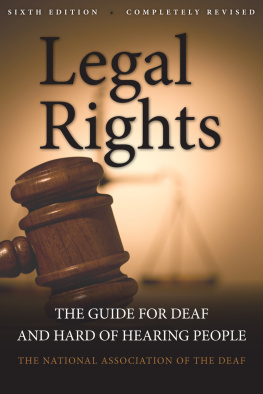






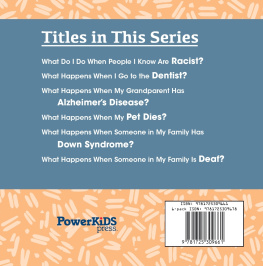
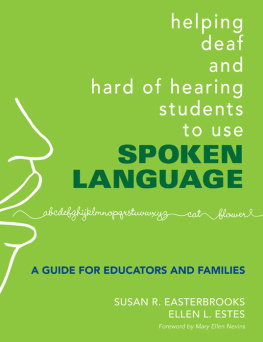
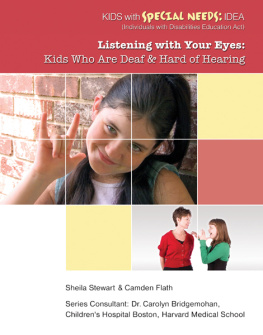
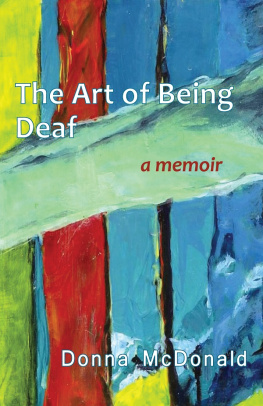
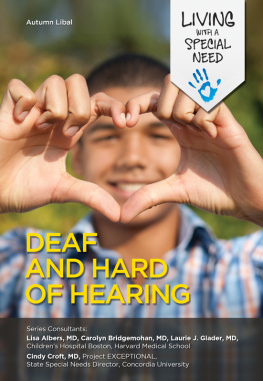
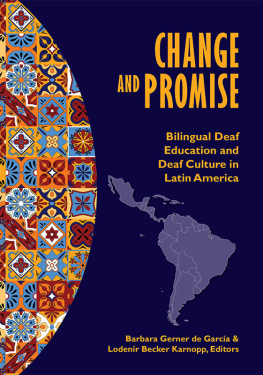
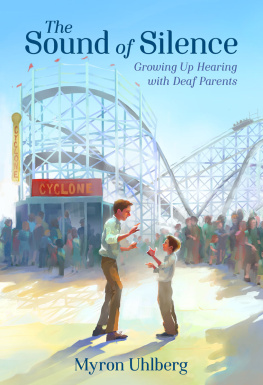
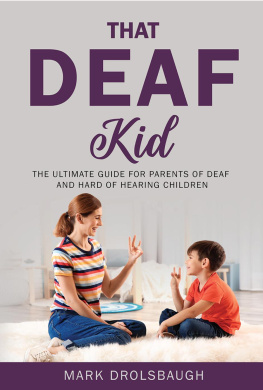

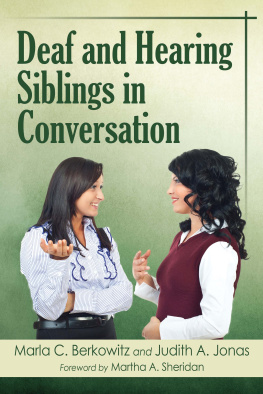
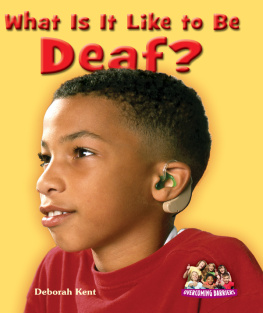

 This paper meets the requirements of ANSI/NISO Z39.48-1992
This paper meets the requirements of ANSI/NISO Z39.48-1992